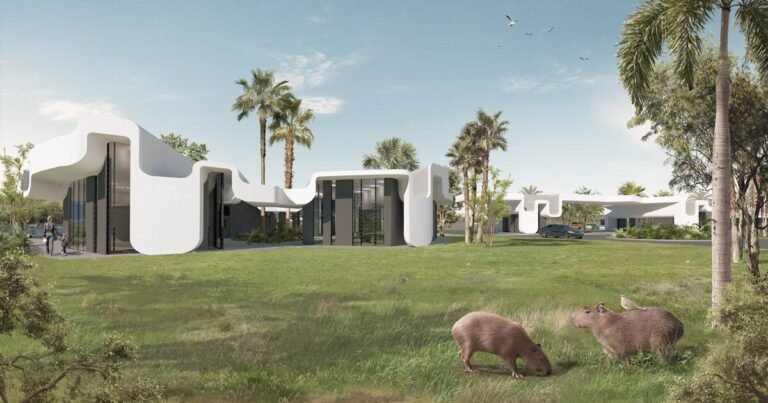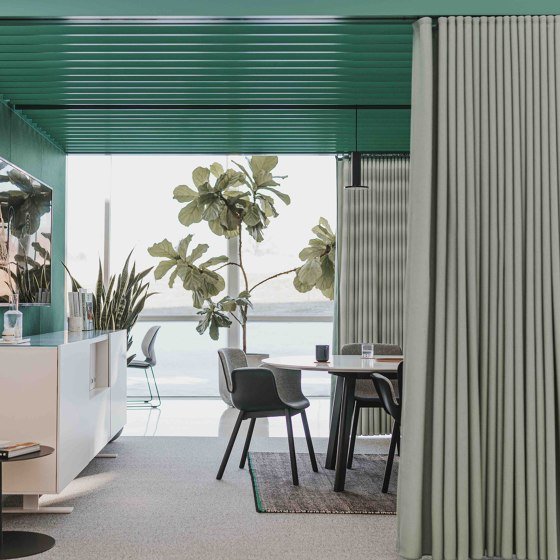Vázquez Consuegra Unveils the Reworking Venture of the Archaeological Museum of Seville
Vázquez Consuegra Unveils the Remodeling Project of the Archaeological Museum of Seville

The remodeling project of the Archeological Museum of Seville, Spain, won in a national competition in 2009 by architectural firm Vázquez Consuegra, was finally presented to the authorities on Monday 29th November 2021. The start of the construction is scheduled for 2022 and has a budget of 20 million euros.
Description sent by the project’s team. A magnificent permanent collection, with some truly superb pieces and a rickety, obsolete container. A remarkable building by the architect Aníbal González, built between 1911-1919, with a series of later interventions unequal fortune, which have devalued, if not anulled, the spatial potential of the original building: the Pavillion of Fine Arts of the Ibero-American Exhibition of 1929.

This essential and long-awaited intervention project in the Archeological Museum presents the opportunity to finally undertake, in a unitary and complete manner, an integral intervention that will affect the entire building. A global vision that, while allowing to satisfactorily and adequately display its splendid permanent collection, will also open the building to the beautiful surroundings of the María Luisa Park and solve the atavistic functional problems that were never properly resolved, it will undertake a series of restorations, consolidation, conditioning, and elimination of inadequate additions. Operations that we consider essential for the survival of the building’s heritage values, as well as to respond to the contemporary requirements and demands of a museum for the 21st century.

Without forgetting, of course, that it is a Property of Cultural Interest and that any elimination of the successive contributions will be made in order to allow the proper conservation of the property and a better historical and cultural interpretation of the protected building. As for new interventions, they must be recognizable, avoiding mimetic confusion. The architectural project must therefore try to achieve the delicate balance between the necessary rehabilitation tasks that allow the adaptation and transformation of the property and the safeguarding of its heritage values.
The set of reforms that have been taking place over the years (historical report) has led to the progressive alteration of the building typology and the internal spatiality of Aníbal González’s building, imposing other logics unrelated to the original construction, but without fundamentally altering the exterior image of its architecture. The construction of intermediate floors at different levels, which has generated the modification of its vertical section, the alteration of the overhead lighting systems, of the entrances, flow and circulation, the use of inappropriate materials, etc., have absolutely distorted the fluid and unitary character of its primitive spatiality.

But the need to accommodate the complex and extensive programme of uses that today must define the new museum plan of the Archeological Museum, in line with contemporary museums (temporary exhibitions, registrable warehouses, areas of research, conservation, and restoration, cafe, assembly hall, spacious and generous spaces for receptions, organization of visitors, etc.) apart from the exhibition discourse of its permanent collection, makes it impossible to recover the building’s primitive spatiality from the Old Renaissance Pavillion, the one that was developed on a single and spacious ground floor.
It will also be impossible to maintain the loggias open to the exterior that would allow that intense and luminous relationship with the gardens of the María Luisa Park. But what we will assume in our proposal for the reorganization, requalification, and modernization of the current Museum, is the challenge of finding that fluid and continuous relationship with the outside once again (wherever it is not incompatible with the exhibition route) and also of evoking that lost spatiality in some areas of the building that are also suitable for the pieces on display.

Intervention in the central axis
In any case, perhaps the substantive operation of the project is developed on its transversal axis, an operation that would try to rescue the space of the central oval (oval as we have verified in the original plans of Aníbal González and ellipse in the survey carried out by Vorsevi in 2008) as access and main lobby of the museum, adding a new vertical, light, and glazed communication core, which will allow the three exhibition levels of the museum to be connected in a clear and satisfactory way.

New communications core
All of this leads us to propose a new vertical communications core, also to the outside of the building, on its rear façade, right on its central axis. Situated outside the building but as close to its southern façade as functional conditions allow and slightly set back with respect to the projection line of the towers (of the double core that contains the reduced staircase) so it will be inscribed inside the virtual envelope of the existing building or, in other words, always within the solid capable of the building. A vertical communications core made up of two symmetrical volumes that house a wide staircase and an accessible lift, that will efficiently transit the three public levels of the museum, connecting them with its new lobby. Strategically located on its rear façade, guarded by the large tipuanas that are located there and completely hidden from passers-by that approach the building from the Plaza de America, thus preserving the unaltered image of the Plaza projected by Aníbal González.

Interventions in the Oval Room
In the proposal, the Oval Room becomes a key element of the compositional and symbolic order of the intervention, recovering its position as an entrance and reception space (access to the different routes, information, rest areas, box office, organisation of groups, etc.) as was the case in Aníbal González’s project, when it was projected for the Ibero-American Exhibition of 1929.
From this central space, you will be able to access both the temporary exhibitions and the permanent exhibition of the Museum. Communication between the north and south façades is also enhanced, thanks to the opening of the large door, located at the back (now closed) to the new luminous and transparent space for communication and vertical circulation, which overlooks the gardens. Therefore, a greater permeability and visual opening of the building towards its surroundings, now intensified with the opening of the external loggias. Permeability, transparency, and natural light.

Constructions of new floors
At the levels corresponding to the lower and upper floors, the most significant operations will affect the structural system, with the replacement of a good part of the existing floors with others more in line with and adapted to the new requirements and in compliance with current regulations on structural safety. To highlight those corresponding to the ground floor where the large rooms with a square plan are covered with slabs made in situ with a grid layout, especially suited to their lights and geometry, which draw simple calligraphy of reliefs and textures that give a formal coherence to all the rooms of the building including the Oval Room, while they will efficiently solve the specific technical problems of lighting and air conditioning. On the roof floor, the original skylights are recovered, now blinded, maintaining and repairing the existing metal trusses, with adequate glazing and thermal insulation for the recovery of overhead lighting.

Recovery of all existing spaces
Another of the most relevant options that this project will carry out, within the chapter of comprehensive restorative actions, refers to the recovery of all the constructed spaces of the building. In this sense, it is interesting to highlight the use of the ends of the building, covered and open areas, of an absolutely extraordinary density and spatial and environmental quality, which are abandoned and in a very serious state of degradation and deterioration. Two public functions linked to the Museum, a cafe and a multipurpose room, will occupy these spaces and will be able to develop their activities with autonomy from the operation of the institution itself, thus seeking greater social interaction, a more intense relationship between the Museum and the city.

Intervention in the semi-basement floor
In the semi-basement and without affecting the existing foundation, the height of its pavement has been slightly lowered, with which the height of the barrel vaults in the keys always exceeds 3 meters and the passage between them is never less than 2.40 meters. It should be remembered that this semi-basement level was designed as a sanitary slab, that isolated and protected the ground floor from moisture. It is a system of brick partitioned vaults, without any constructive value and with a rough and uneven finish. Over time, this level was colonised by the Museum, first as a warehouse and later housing the Prehistoric Exhibition.






